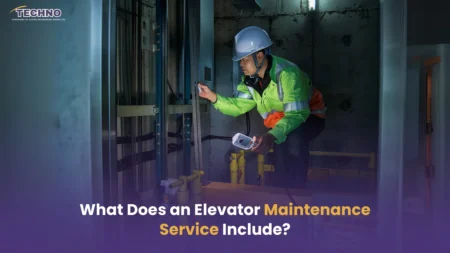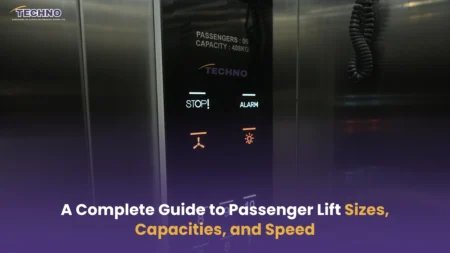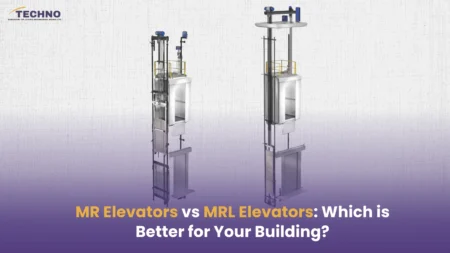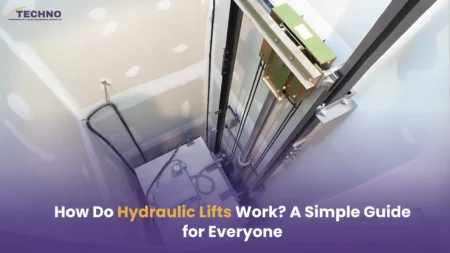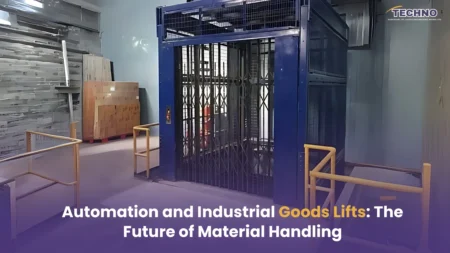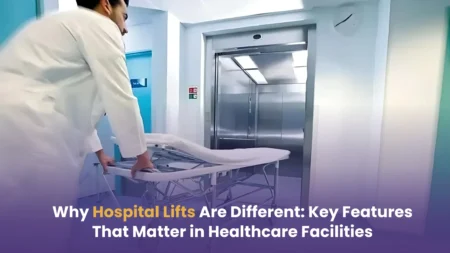Once upon a time, residential elevators were considered a luxury. Now, they’re a normal solution – and in some instances, a requirement. Urban living is turning vertical for many people, with the rise of apartment buildings, duplexes, and smart homes leading to a surge in Small Lift For Home demands. Whether for convenience, style, mobility, or to future-proof your home, small home lifts are changing the way we view transit and movement across private spaces.
This guide will cover everything you need to know before and when you install yours, including technical options and practical benefits. Let’s take a look at how a small lift could work for you and your home – in a practical and aesthetic way.
1. Space-Efficient Design Advantages of Any Home Lift
Most times we are asked, “Will it take up too much space?” Well, the answer is: “Absolutely not.” Modern compact home lift have been designed to take up very little space, while the act of taking up space has little relationship to performance, safety, or engineering principles. If you live in a villa or duplex, or in a smaller apartment, then apartment lifts may be something that you want to consider as a fun home access option.
Here are a few features that mitigate space:
Minimal civil work: Most models do not require any pit or overhead machine room.
- Slim profile: Most models can fit into a footprint of approximately 3’x3′, depending on your specific layout options.
- Flexible placement: They can be installed flush to the wall, in a corner, or even externally in a glass shaft.
With architectural constraints removed, modern home lifts allow for many applications for creative homes, both like and unlike themselves.
2. Capital and running costs
A main consideration for home builders and owners is the cost factor. The good news is that, while there are different prices for customisation, height, and technology, affordable home lifts are NOT a myth; there are loads of great value small lifts available on the market today.
The following is a breakdown of the key cost components:
- Installation costs: Ridiculously variable depending on the type of lift, number of stops, desired design, and method of shaft construction, from ₹4.5 lakh to ₹12 lakh.
- Annual maintenance: Allow for around ₹15,000 to ₹30,000 per year for ongoing service.
- Utility costs: Electricity use will almost invariably be less than most appliances in the home.
So, on balance, investing in a small lift for home will require about the same financial investment as putting in a modular kitchen or smart AC system, plus providing additional value in return for your comfort and increasing your property’s value.
3. Safety Features and Emergency Systems
Safety should not be a luxury; it is a standard. All private home elevators must meet strict criteria for safety features, as well as safety backup systems for emergencies.
Modern safety integrations include:
- Automatic rescue device (ARD): Ensures the lift will land on the nearest floor level in the event of a power failure.
- Overload sensors: Prevent movement if the cabin exceeds load capacity.
- Interlocks and sensors: Prevent the cabin door from being opened between floors.
- Emergency communication system: Some models provide a phone or intercom-like system that connects directly to the home.
Partnering with a certified manufacturer and installer creates a home elevator that not only looks great but is also safe if used correctly!
4. Energy Efficiency and Power Consumption
Fun fact: Small elevators are energy efficient!
Hydraulic and gearless traction elevators are manufactured with energy-efficient inverters and low-power motors. Generally, a small elevator system uses 1.5-2.5 kW while in service– the same as most microwaves or treadmills.
Additional power saving features:
- Sleep mode: automatically turns off lights and fans during idle.
- Regenerative drives: recycle additional energy back to the building’s power supply.
- LED cabin lighting: reduced power consumption (even in normal service).
Sustainable design equals sustainable savings!
5. Aesthetic Customization and Interior Design Compatibility
Raising and lowering you and your family members in today’s indoor lift for home is no longer just about movement; it contributes to the character of your home.
Manufacturers have taken note of this orientation and invest considerable energy in designing attractive finishes, materials, and designs that fit within your own residential décor. The customization colours, flooring, and finishes in your home are limited only by your imagination; this could be a glass lift with chrome trims, or, alternatively, a wood-paneled cabin, or even a futuristic matte black model.
Customization options:
- Wall Panels: glass, wood laminate, stainless steel, powder-coated metal,
- Flooring: stone-finish tiles, vinyl, or custom-matched to existing materials,
- Doors: swing doors, telescopic doors, or automatic sliding doors, depending on space and style.
In this way, a smart home elevator makes both a functional decision and a design decision.
6. Appropriate Lift Types for Residential Spaces
Choosing the right mechanism is paramount. The following are the better lift types for residential use:
a) Hydraulic Lifts
– Ideal for buildings with limited headroom
– Equal, smooth operation; silent hydraulic pump
– Requires regular visual checking and maintenance of the oil level
b) Gearless Traction Lifts
– Energy-efficient; whisper quiet
– Sleek design; no machine room is necessary
– Great for high-end residential use
c) MRL (Machine Room-Less) Lifts
– All machinery would fit in the shaft
– Increased ease of installation, as it lowers the overall square footage
– Great option for mid-rise residential homes
Each lift type may be tailored to a specific function, and an in-depth assessment is critical in determining what is wheeled appropriate for your building.
7. Access for seniors and persons with disabilities
It is here that residential lifts provide more than just convenience, they Provide Agency.
For seniors or other individuals who have mobility challenges, a residential lift is not only a useful solution, but it also relieves the physical and emotional stress of stairs and provides access to areas of the home that lead to independence and a safer environment.
Accessible features can include:
- Fold-flat seat or wheelchair accessible cabin sizes
- Braille buttons and voice announcements
- Low-height control panels
For many families, this is their main rationale, and it is important.
8. Noise Levels and Smooth Operation in Home Settings
Your home is your sanctuary. This is why quiet operation is critical.
- Modern lifts use vibration-isolation technology and silent motors. Private home elevators have achieved a noise level of less than 50 dB – less than a washing machine!
- Smooth braking, seamless transitions, and cabin insulation ensure the lift integrates into your home rather than interrupts it.
9. Smart Home Integration and Controls
Why should your lift be any less smart than the rest of your home?
Smart home elevators today are equipped with features that provide Internet of Things (IoT) capability. With the use of a mobile app or integrated home automation systems, your lift can be controlled with the click of a button from the comfort of your couch, scheduled to run on predetermined times, or continuously monitored for preventative maintenance – it’s never been easier!
Examples of smart features include:
- Remote diagnostics and alerts
- App-based lift calls and floor selection
- Voice assistant integration with Alexa or Google Home
Now that’s convenience and future proof!
10. Public and Building Codes & Compliance for Home Elevators
Prior to installation, it is necessary to have an idea of the local rules & regulations.
Some of the major regulatory checks include:
- Lift Licences Approval & License: These are issued by the state lift inspectors after the lift is installed.
- Structures that can accommodate the lift: Shaft walls and lift pit.
- Fire safety: In some states, fire-rated doors and fire alarms may be required.
- Accessibility compliance for lifts: The building code may require some measure of compliance if it is being used in a public or semi-public space.
Reputable lift providers, such as Techno Elevators, can help homeowners and builders maximize the approvals, so it conforms with all regional compliance. So you can rest assured you are always compliant and always covered.
General Pricing Model: small lift for home price in india

Final Take
Choosing to install a lift in a house does not mean luxury and lifestyle; it means living smarter, safer, and more efficiently. It does not matter whether it is due to your future health concerns, creating an enhanced level of accessibility around your home, or perhaps more for reasons of aesthetic design; a home lift is worth the investment.
A lift is more than just a convenience; it is a lifestyle investment for your future, your freedom, and your property value.
At Techno Elevators, we are not only an elevator company; we offer movement solutions that perfectly move with you in life. If you are considering a renovation to your home or building, or uplifting your society with an upgrade, reach out to our specialists. Let’s find the right movement solution that fits your space, your needs, and your concept.


